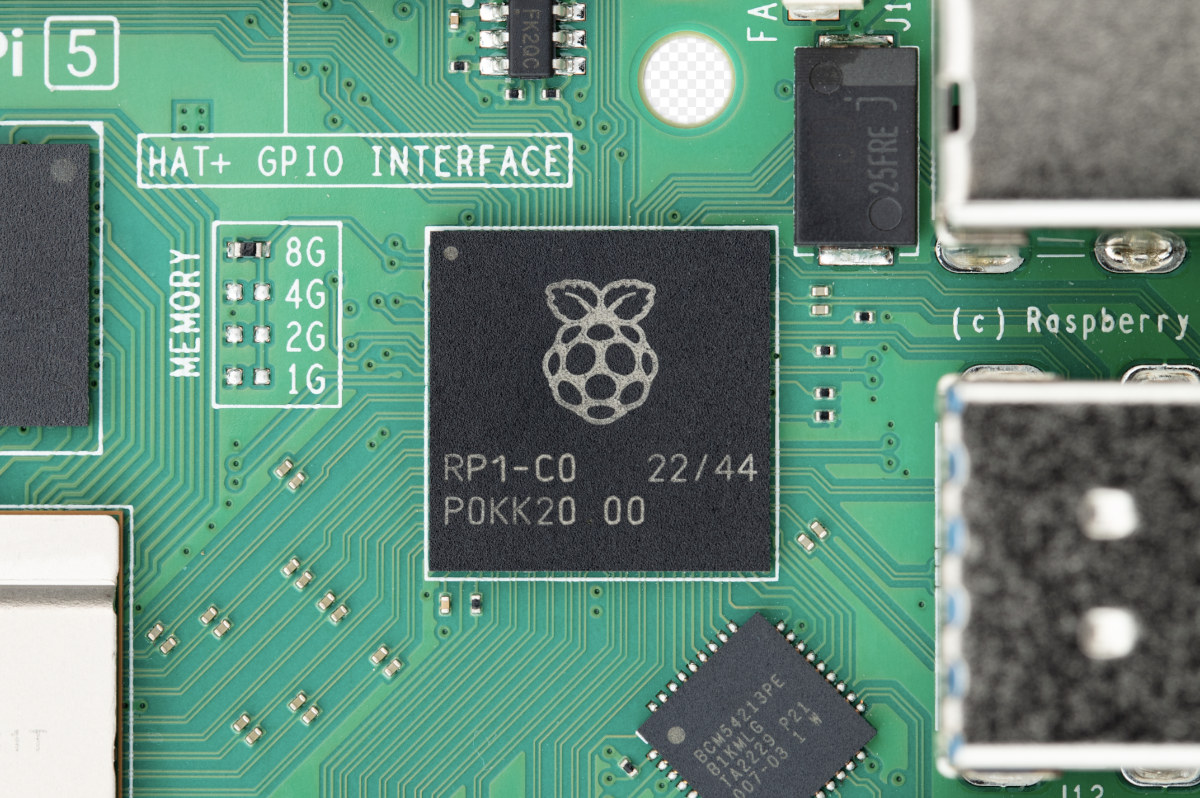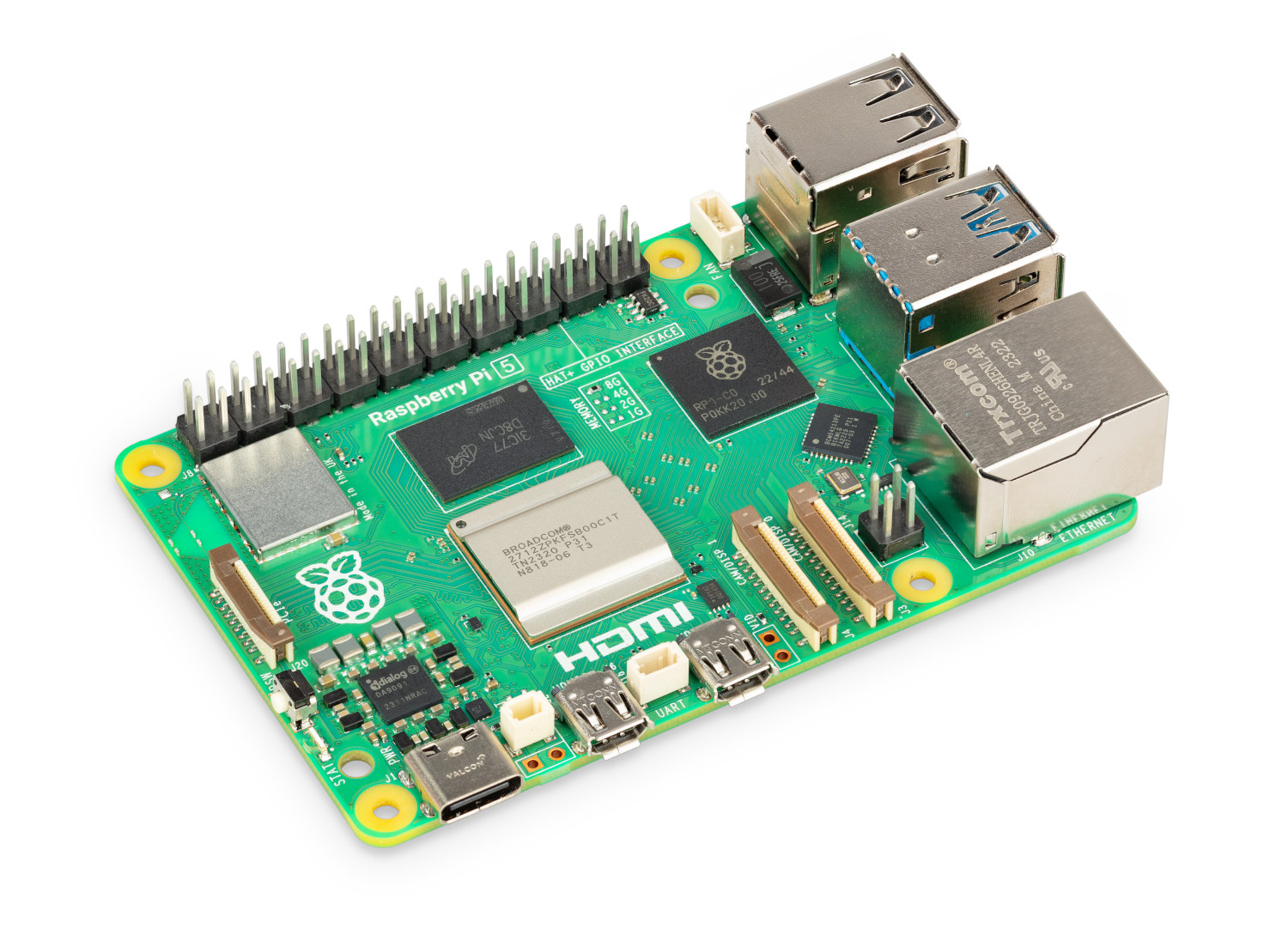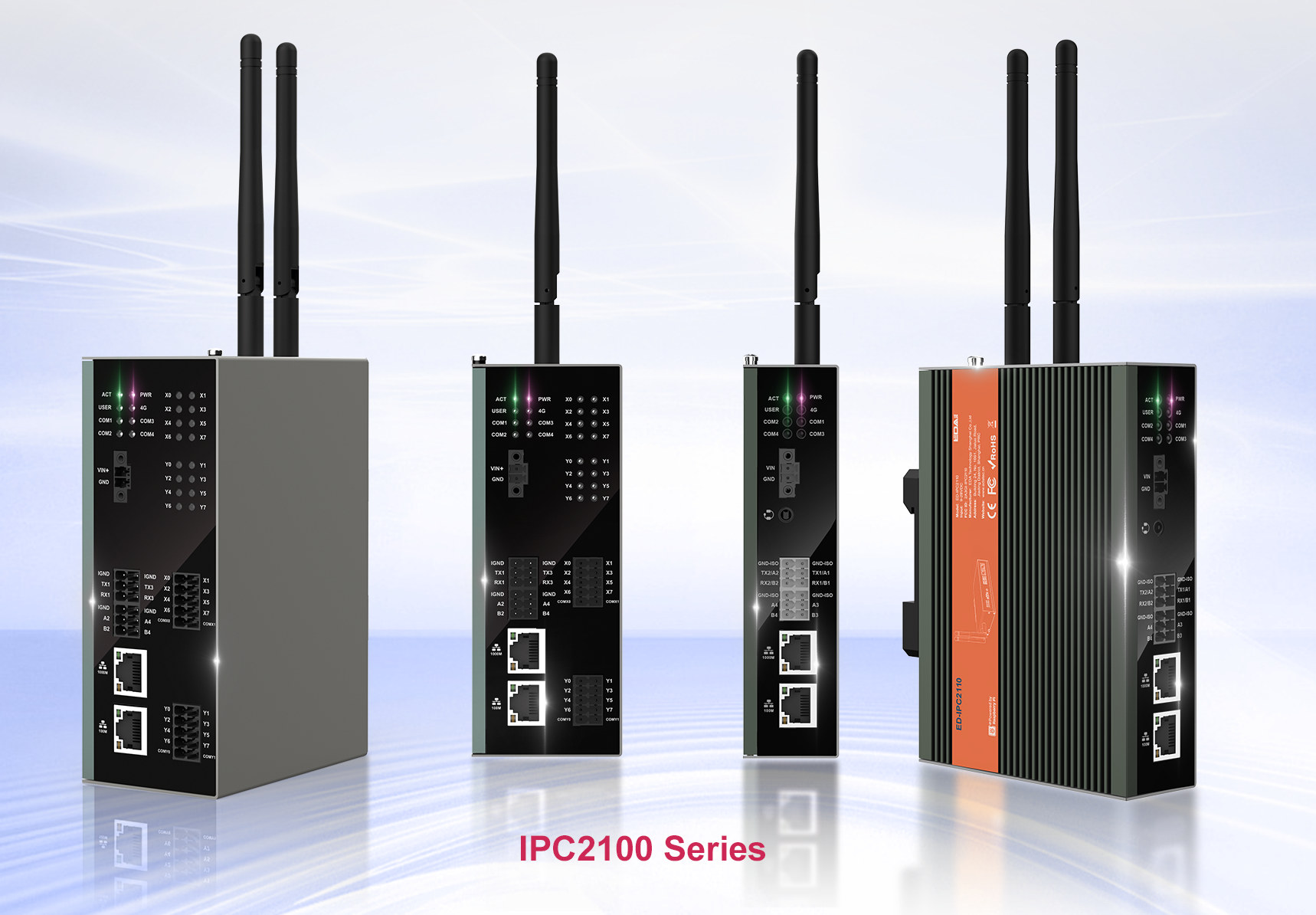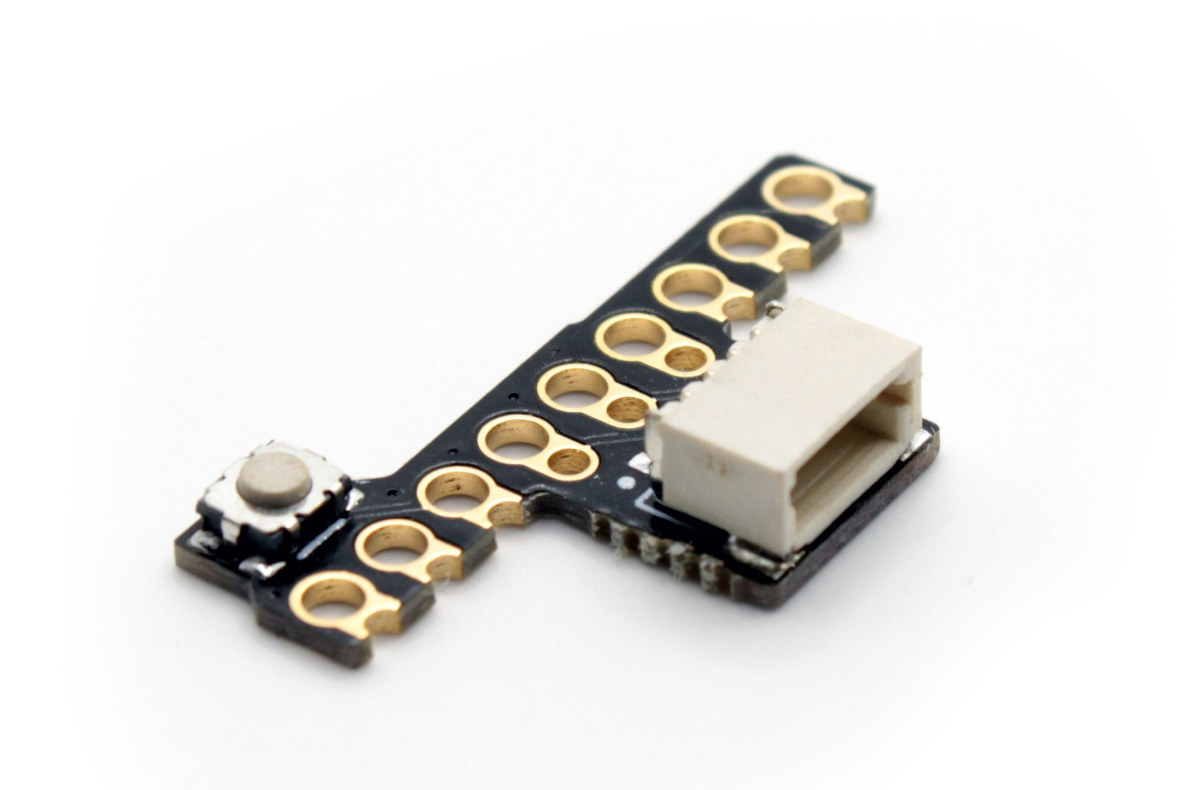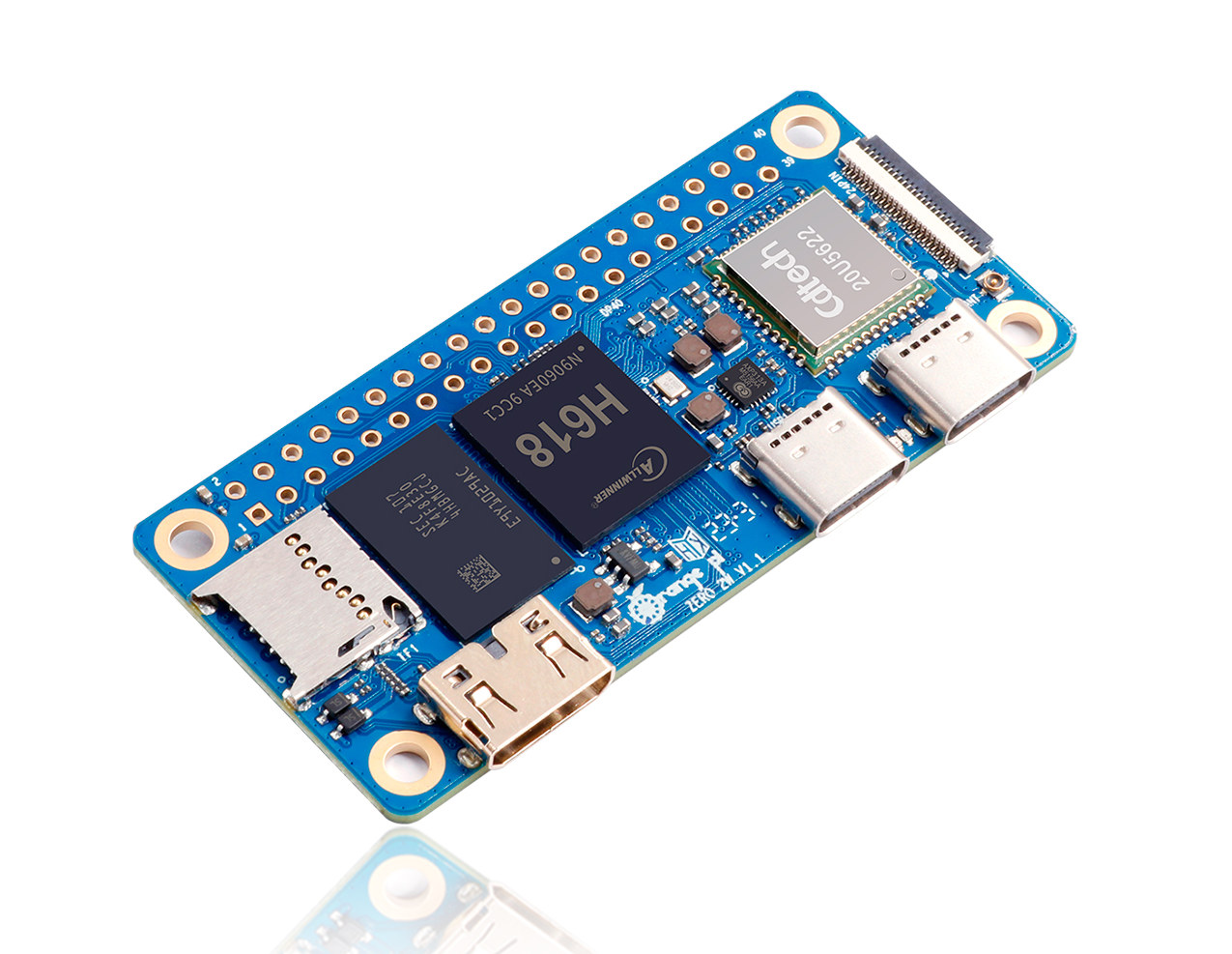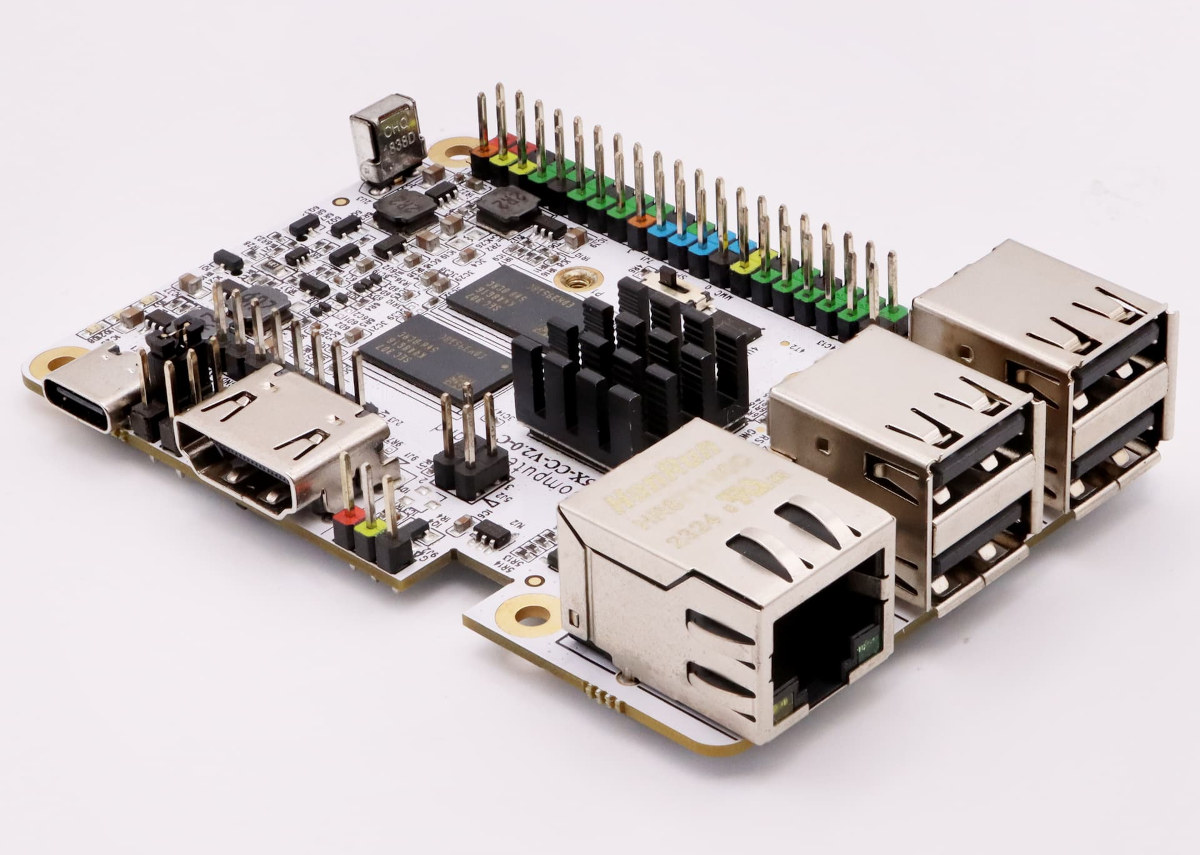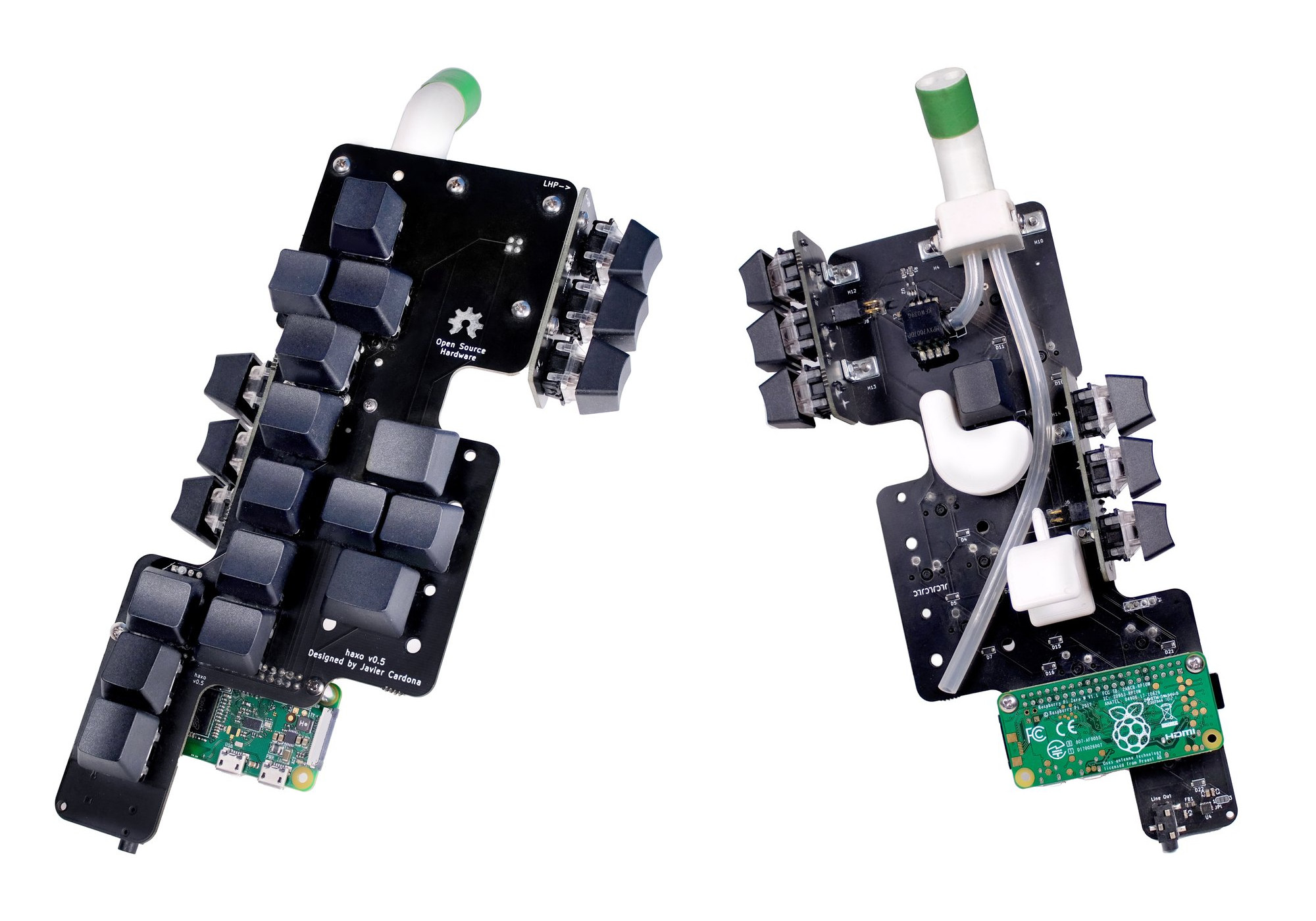The Raspberry Pi 5 was recently introduced with the Broadcom BCM2712 CPU and the RP1 chip handling I/Os designed in-house by the Raspberry Pi just like they did for the RP2 (RP2040) microcontroller, and we now have more details about the Raspberry Pi RP1 including a (draft) datasheet and a block diagram. The RP2040 came out before the RP1 peripheral controller as the design for the latter started 7 years ago with a total R&D budget to develop the Raspberry Pi 5 of around 25 million dollars. While at launch, we knew the RP1 handled some peripherals, doubled USB bandwidth with two separate USB 3.0 hosts, and embedded higher speed MIPI interfaces, it was unclear whether some of the other connections came from the BCM2712 or RP1 chips. But we now do know with the release of the datasheet. Raspberry Pi RP1 key features and specifications: MCU – Dual-arm Cortex-M3 […]
Raspberry Pi 5 SBC launched with 2.4 GHz Broadcom BCM2712 quad-core Cortex-A76 SoC
The long-awaited Raspberry Pi 5 SBC is finally here with a powerful Broadcom BCM2712 quad-core Cortex-A76 processor clocked at 2.4 GHz, 4GB or 8GB memory, and the usual Raspberry Pi Model B form factor. The Raspberry Pi 4 Model B was introduced in June 2019, so it took over four years to get a new model, and the Raspberry Pi 5 should deliver 2 to 4 times the performance, compete directly with Raspberry Pi-shaped Rockchip RK3588S SBCs such as the Radxa Rock 5A or Cool Pi 4 Model B and benefit from a larger community and better software support. Raspberry Pi 5 specifications: SoC – Broadcom BCM2712 CPU – Quad-core Arm Cortex-A76 processor @ 2.4 GHz with crypto extensions, 512KB per-core L2 caches, 2MB shared L3 cache GPU – VideoCore VII GPU @ 800 MHz with support for OpenGL ES 3.1, Vulkan 1.2, 4Kp60 HEVC decoder System Memory – 4GB […]
EDATEC ED-IPC2100 industrial computer offers 4x RS485/RS232 ports
EDATEC has launched four more Raspberry Pi CM4-powered industrial computers with the ED-IPC2100 Series that mostly differ from the earlier ED-IPC2010 model with an extra M.2 Key-B socket for an SSD, an extra 10/100Mbps Ethernet port, and four COM ports with RS232 or RS485 interfaces depending on the exact model. The new ED-IPC2100 series industrial computer family ships with a Raspberry Pi Compute Module 4 with up to 8GB RAM, 32GB flash, optional WiFi 5 and Bluetooth 5.0, and offers a full-size HDMI video output, two Ethernet ports, and a few USB ports. The ED-IPC2120 model looks to offer some extra features such as an HDMI Touch FPC connector, MIPI CSI camera and DSI display connectors, and audio interfaces. ED-IPC2100-series specifications: SoM – Raspberry Pi CM4 SoC – Broadcom BCM2711 quad-core Cortex-A72 processor @ 1.5GHz with VideoCore VI GPU System Memory – 1GB, 2GB, 4GB, or 8GB LPDRR4-3200 RAM Storage […]
Review of CM4 XGO Lite – A Raspberry Pi CM4 based smart robot dog with a robotic arm
The CM4 XGO Lite is a smart robot dog based on Raspberry Pi CM4 system-on-module and designed to learn to program using Blockly, Python, and ROS. This four-legged robot also happens to feature a 3-joint robot arm and a robot gripper installed on the back that can pick up light objects. The Raspberry Pi CM4 module drives the LCD screen and camera and performs AI and computer vision processing, while each joint is controlled with a servo motor, and a 6-axis tilt sensor ensures stable walking and movement. We’ve already discussed the capabilities of the CM4 XGO Lite, aka XGO Lite 2, when it was announced earlier this year, so we’re not going to go into details here, but some of the highlights include support for faster AI edge computing applications such as face detection and object classification, omnidirectional movement, six-dimensional posture control, posture stability, and multiple motion gaits. Robot […]
Pico QwiicReset board adds Reset button and Qwiic connector to Raspberry Pi Pico
Pico QwiicReset is a tiny add-on board for the Raspberry Pi Pico that adds a Reset button as well as the Qwicc connector to more easily connect I2C modules to the popular MCU board. The lack of a Reset button on the Raspberry Pi Pico has always been an issue since the reset pin is used to flash the firmware, so people have tried various ways to add a Reset button to the Pi Pico board. The Pico QwiicReset is like an extension of the Pimoroni “Captain Resetti” button with an extra Qwiic connector. The Pico QwiicReset board is shown soldered to a Raspberry Pi Pico board above, but it’s also compatible with the Raspberry Pi Pico W and it works with or without headers soldered to the board. But you may noticed the Debug header is partially covered on Pico W, which means the add-on board cannot be used […]
Orange Pi Zero 2W – A Raspberry Pi Zero 2W alternative with up to 4GB RAM
As its name implies the Orange Pi Zero 2W is an alternative to the Raspberry Pi Zero 2W with basically the same features and form factor, but equipped with a slightly more powerful Allwinner H618 quad-core Cortex-A53 clocked at 1.5 GHz, and more RAM options from 1GB to 4GB. The new Orange Pi board comes with a mini HDMI port, two USB-C ports, WiFi 5 and Bluetooth 5.0 wireless module, a microSD card for the OS, a 16MB SPI flash for the bootloader, the usual 40-pin Raspberry Pi GPIO header, and a 24-pin “function” connector used for expansion boards and located where the camera connector is on the Pi Zero 2W. Orange Pi Zero 2W specifications: SoC – Allwinner H618 quad-core Arm Cortex-A53 processor @ up to 1.5GHz with 1MB L2 cache and Arm Mali-G31 MP2 GPU with support for OpenGL ES 1.0/2.0/3.2, OpenCL 2.0, Vulkan 1.1 System Memory – […]
Libre Computer AML-S905X-CC-V2 SBC directly installs Linux images from the Internet
Libre Computer AML-S905X-CC-V2 “Sweet Potato” is a “new” Amlogic S905X SBC following the Raspberry Pi 3B form factor and that will eventually directly boot Linux images downloaded from the Internet using the Libre Computer OS Tool (LOST). I wrote “new” in quotes because the single board computer is an update to the Potato board (AML-S905X-CC) introduced in 2017 with just a few hardware changes. But that’s because Libre Computer focuses on the software side and all/most of their boards can now run mainline Linux and have support for features such as LOST whose support is set to be implemented by November. Libre Computer AML-S905X-CC-V2 SBC specifications with changes in bold or strikethrough: SoC – Amlogic S905X quad-core Arm Cortex-A53 processor @ 1.5 GHz with penta-core Arm Mali-450MP GPU, and Amlogic Video Engine 10 VPU System Memory – 2GB DDR4 (OEM can request 1GB) Storage 1x microSD card slot with UHS […]
Haxophone – A Raspberry Pi-based electronic saxophone with mechanical keys (Crowdfunding)
The Haxophone is an unusual Raspberry Pi expansion board that transforms the popular SBC into a travel saxophone using mechanical keys. The hackable musical instrument is open-source hardware and OSHWA certified and comes with mechanical keys which makes it easily repairable, customizable by changing keycaps or the firmware, and at a price point cheaper than commercial digital saxophones with custom molded keys. Haxophone key features and specifications: Custom Raspberry Pi HAT PCB Tactile-feedback 5-pin mechanical switches Mechanical keycaps Airflow pressure sensor Built-in audio amplifier compatible with Raspberry Pi Zero and Zero W Serial console for hacking Weight – 180 grams OSHW certifications – PT000005 You’ll find KiCAD hardware design files, assembly instructions, documentation, and the software and firmware used with the Haxophone on GitHub. There are two main software components, first haxo-rs Rust-based driver for detecting key presses and breath in order to convert them into notes, and fluidsynth synthesizer […]


